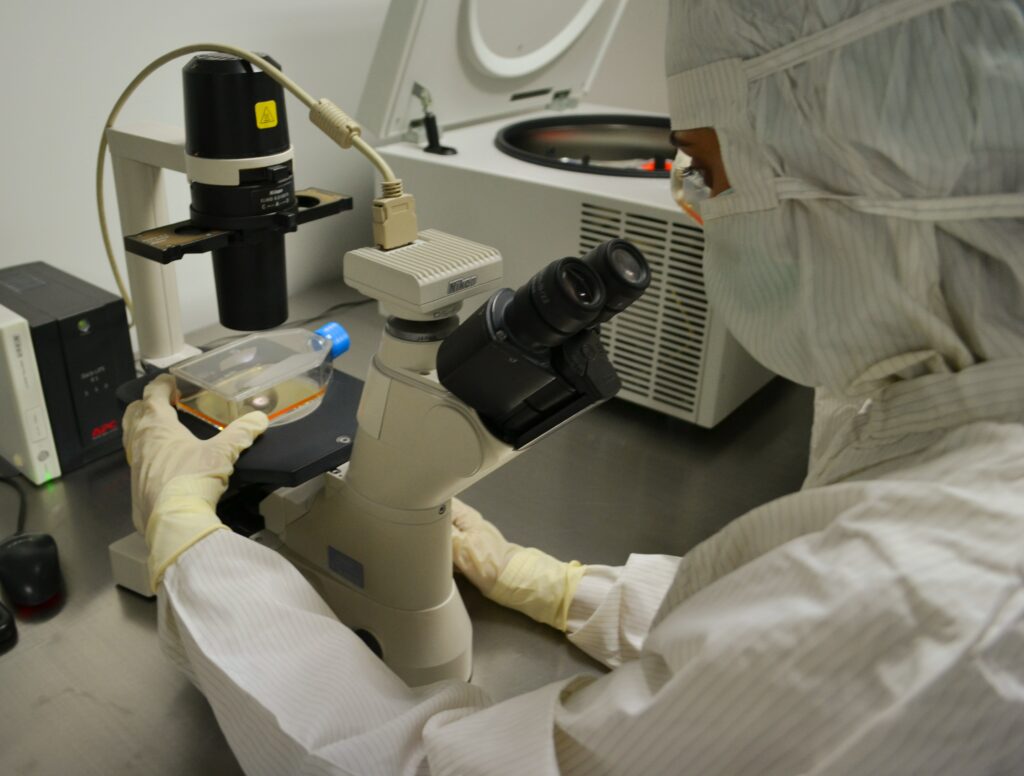Cognition studies on N-Acetyl Selank have been conducted for a long time, and in this article, we will go through some of the most relevant research findings.
Tuftsin is a naturally occurring peptide, and its synthesized counterpart, N-Acetyl Selank, is a short heptapeptide comparable to Tuftsin. [i] Tuftsin is a naturally occurring tetrapeptide that is thought by scientists to play a role in immune system regulation. Studies suggest the Selank peptide may be able to modulate the immune system.
As suggested by the findings of several studies, the peptide known as Selank may exert its effects in two distinct ways: [ii, iii]
(a) By possibly activating the system of gamma-aminobutyric acid (GABA) receptors
(b) By way of the expression of the genome and possible participation in the inflammatory process
Selank Research and Clinical Investigations
N-Acetyl Selank and Anxiety
A clinical study [iv] was conducted on 62 test subjects with generalized anxiety disorder (GAD) in 2008. All individuals were split into two groups; one group was given allopathic anxiety chemicals, while the other group was given Selank peptide. Both groups were given the same amount of time to respond. Following the conclusion of this study, all 62 subjects’ psychometric levels were analyzed and compared.
In light of the findings, it was hypothesized that the Selank peptide may be just as potentially impactful as the control chemical in lowering the anxiety the test participants experienced. The individuals who were given peptides also had what seemed to be favorable psychostimulant impact. According to A. A. Zozulia et al.’s research, “The clinical-biological study suggested that patients with GAD and neurasthenia had the decreased level of tau(1/2) leu-enkephalin which was correlated with disease duration, the severity of symptoms related to anxiety and asthenia, and autonomic disorders.” This parameter appeared to increase when Selank was given, and stronger positive correlations with anxiety levels may have been observed, primarily in subjects with GAD.
In this particular clinical study [v], similar to the prior, there were a total of 60 test subjects with anxiety and phobia. All subjects were given a random assignment to one of two groups: in one group, they were given an allopathic chemical, and in the other group, they were given a Selank peptide. Following the conclusion of this study, the findings suggested that the peptide may have both an anxiolytic and a nootropic potential.
N-Acetyl Selank and Cognition
Research studies [vi] were conducted in which experimental rats were given Selank peptide, and then these rats were put through four days of ‘training’ to develop conditioned avoidance responses (CAR). The researchers speculated that their learning capacities increased as mistakes decreased throughout training. These researchers hypothesized that the peptide had the potential to function as a nootropic.
N-Acetyl Selank and Immunomodulation
In this clinical study [vii], subjctes with anxiety and neurasthenia participated, and they were all given the peptide over two weeks. After two weeks, blood samples were obtained from all subjects and analyzed. The reports suggested there seemed to be a considerable increase in the levels of interleukin-6 cytokines and a change in the ratio of Th1 to Th2 cytokines. “The cytokine regulating effects revealed in the study suggest that Selank could be used as a novel immunomodulator in research of anxiety-asthenic disorders,” said O.N. Uchakina and colleagues. In addition, the researchers suggested the possible adaptogenic properties of Selank may mitigate the impact of infections in older subjects and those under environmental stresses.
N-Acetyl Selank and Withdrawal
In a research [viii] using experimental rats, the animals were given 10% ethanol for 24 weeks. These rats reportedly demonstrated considerable alcohol withdrawal symptoms when the alcohol infusion was suddenly stopped. At this point, the peptide was given to all of the rats that had been impacted. After 48 hours following, the researchers hypothesized that the rats appeared to exhibit significantly fewer signs and symptoms of alcohol withdrawal.
N-Acetyl Selank- Cholesterol Control and Weight
In one experiment [ix], 37 rats were fed high-fat chow over six weeks in a row until they had acquired a large amount of weight. After some time, these rats were split into two groups; one group received a sodium chloride solution, while the other group received the Selank peptide. The research suggested that the peptide group seemed to have improved their fat metabolism, as the cholesterol levels had dropped by up to 58%.
If you are a licensed professional interested in purchasing Selank peptides for your clinical studies, click here to visit Core Peptides. Please note that none of the items listed are approved for human or animal consumption. Laboratory research chemicals are only for in-vitro and in-lab use. Any kind of physical introduction is illegal. Only authorized academics and working professionals may make purchases. The content of this article is intended only for instructional purposes.
Reference
[i] Kozlovskaya MM, Kozlovskii II, Val’dman EA, Seredenin SB. Selank and short peptides of the tuftsin family in the regulation of adaptive behavior in stress. Neurosci Behav Physiol. 2003 Nov;33(9):853-60. https://pubmed.ncbi.nlm.nih.gov/14969422/
[ii] Volkova, A., Shadrina, M., Kolomin, T., Andreeva, L., Limborska, S., Myasoedov, N., & Slominsky, P. (2016). Selank Administration Affects the Expression of Some Genes Involved in GABAergic Neurotransmission. Frontiers in pharmacology, 7, 31. https://www.ncbi.nlm.nih.gov/pmc/articles/PMC4757669/
[iii] T.A Kolomin et al., Transcriptomic Response of Rat Hippocampus and Spleen Cells to Single and Chronic Administration of the Peptide Selank. June 2, 2009. https://www.researchgate.net/profile/Timur-Kolomin/publication/43097180
[iv] Zozulia AA, Neznamov GG, Siuniakov TS, Kost NV, Gabaeva MV, Sokolov OIu, Serebriakova EV, Siranchieva OA, Andriushenko AV, Telesheva ES, Siuniakov SA, Smulevich AB, Miasoedov NF, Seredenin SB. Efficacy and possible mechanisms of action of a new peptide anxiolytic selank in the therapy of generalized anxiety disorders and neurasthenia. Zh Nevrol Psikhiatr Im S S Korsakova. 2008;108(4):38-48. Russian. https://pubmed.ncbi.nlm.nih.gov/18454096/
[v] Medvedev VE, Tereshchenko ON, Israelian AIu, Chobanu IK, Kost NV, Sokolov OIu, Miasoedov NF. A comparison of the anxiolytic effect and tolerability of selank and phenazepam in the treatment of anxiety disorders. Zh Nevrol Psikhiatr Im S S Korsakova. 2014;114(7):17-22. Russian. https://pubmed.ncbi.nlm.nih.gov/25176261/
[vi] Kozlovskii II, Danchev ND. The optimizing action of the synthetic peptide Selank on a conditioned active avoidance reflex in rats. Neurosci Behav Physiol. 2003 Sep;33(7):639-43. https://pubmed.ncbi.nlm.nih.gov/14552529/
[vii] Uchakina ON, Uchakin PN, Miasoedov NF, Andreeva LA, Shcherbenko VE, Mezentseva MV, Gabaeva MV, Sokolov OIu, Zozulia AA, Ershov FI. Immunomodulatory effects of selank in patients with anxiety-asthenic disorders. Zh Nevrol Psikhiatr Im S S Korsakova. 2008;108(5):71-5. Russian. https://pubmed.ncbi.nlm.nih.gov/18577961/
[viii] Kolik LG, Nadorova AV, Kozlovskaya MM. Efficacy of peptide anxiolytic selank during modeling of withdrawal syndrome in rats with stable alcoholic motivation. Bull Exp Biol Med. 2014 May;157(1):52-5. https://pubmed.ncbi.nlm.nih.gov/24913576/
[ix] N.F. Mjasoedov et al, The Influence of Selank on the Parameters of the Hemostasis System, Lipid Profile, and Blood Sugar Level in the Course of Experimental Metabolic Syndrome. April 14, 2014. https://link.springer.com/epdf/10.1134/







